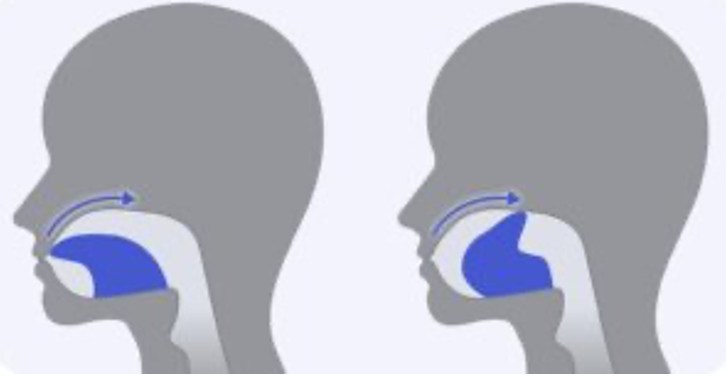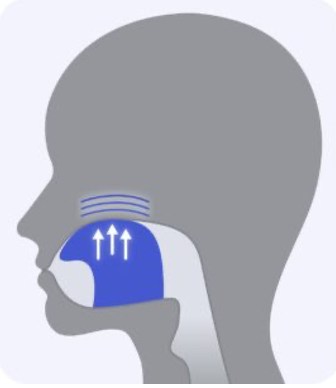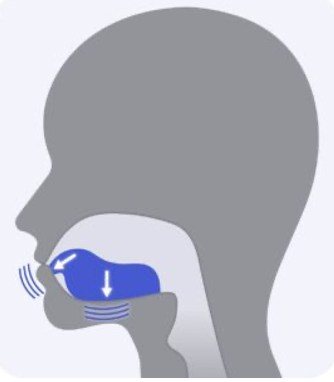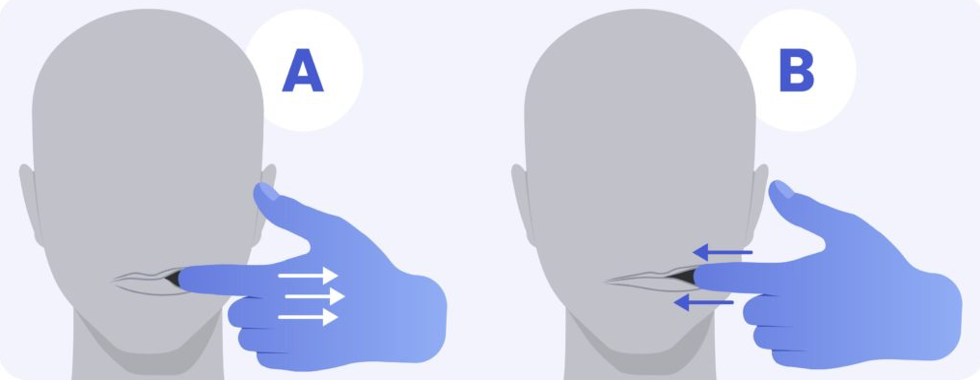Reading: Exercises to Overcoming Snoring
Snoring can be a sore subject for bed partners, roommates, and family members. It can cause disrupted sleep and may even force some to sleep in separate bedrooms.
To avoid these problems, it’s natural to want to snore less. At the same time, it can be hard to know which methods to reduce snoring are actually backed by science.
For people with mild snoring, research has shown that mouth and throat exercises can help tone the muscles around the airway so that snoring is not as frequent or noisy. Likewise, the same mouth and throat exercises have been shown to improve mild to moderate obstructive sleep apnea Trusted SourceNational Center for Biotechnology InformationThe National Center for Biotechnology Information advances science and health by providing access to biomedical and genomic information.View Source (OSA).
These mouth exercises are also called “myofunctional therapy” or “oropharyngeal exercises.” It is often taught by a trained myofunctional therapist.
As with any type of workout regimen, it requires time and effort for these mouth exercises to have an effect. When done properly, a significant number of snorers and those with mild to moderate OSA have reported that these exercises lead to less snoring and better sleep.
Why Do We Snore and/or Have Obstructive Sleep Apnea?
During sleep, the space behind our tongue narrows, and the
tissue around it becomes floppy and relaxed. When air gets forced through as we
breathe in and out, the tissue flutters, making noise like a flag whipping in
the wind.
Snoring happens when the airflow from breathing causes floppy tissue in the
back of the throat to vibrate.
Obstructive sleep apnea happens when floppy muscles in the back of the throat relax to the point where the muscles nearly or completely closes off the airway. This disrupts sleep and can cause low oxygenation during sleep.
How Can Mouth Exercises Help Stop Snoring and Sleep Apnea?
Snoring and obstructive sleep apnea occurs due to floppy airway muscles, poor tongue positioning (“tongue posture”), and breathing through the mouth during sleep. Mouth and throat exercises can tone up the airway and tongue muscles while promoting breathing through the nose.
Like how going to the gym regularly can tone up your arms, regular mouth and throat exercises will add strength to your mouth and airway muscles. Muscles that are more taut are less likely to be floppy and flutter.
Technically, these exercises are called “myofunctional therapy” or “oropharyngeal exercises”. The oropharynx is the area at the back of your mouth that includes the back of the tongue, sides of the throat, tonsils, adenoids, and soft palate (the soft muscular part at the back of the roof of the mouth).
Researchers have found Trusted SourceNational Library of Medicine, Biotech InformationThe National Center for Biotechnology Information advances science and health by providing access to biomedical and genomic information.View Source that doing repetitive oropharyngeal exercises while you’re awake can help keep the tissue from becoming excessively floppy and vibrating during sleep. Several studies have shown that toning these muscles has been shown to help reduce snoring and milder forms of obstructive sleep apnea.
Who Can Benefit From Mouth and Throat Exercises for Snoring?
The benefits of these mouth and throat exercises (“myofunctional therapy”) have been widely studied in people who snore or have mild to moderate obstructive sleep apnea. People with obstructive sleep apnea have the most benefit with myofunctional therapy when used in conjunction with a CPAP machine or after surgery.
It is important to note that even for mild snoring, mouth and throat exercises are not always effective. Individual factors, like the size and shape of a person’s mouth, tongue, and throat, may affect how well these exercises work.
Oropharyngeal exercises may be less effective if a person’s snoring is related to alcohol or use of sedatives that cause relaxation of the muscles in the back of the throat.
How Often Do You Need To Do Mouth Exercises for Snoring or Sleep Apnea?
Based on the existing research, the best bet is to do mouth exercises for at least 10 minutes per day for three months in order to notice a reduction in snoring or OSA. Most people perform the exercises two to three times per day.
Most research studies demonstrate benefit after 3 months Trusted SourceNational Library of Medicine, Biotech InformationThe National Center for Biotechnology Information advances science and health by providing access to biomedical and genomic information.View Source of mouth and throat exercises. Another study Trusted SourceNational Library of Medicine, Biotech InformationThe National Center for Biotechnology Information advances science and health by providing access to biomedical and genomic information.View Source showed that performing myofunctional exercises as part of a smartphone game for at least 15 minutes per day was effective in improving snoring.
As with any workout, it takes time to build muscle, so you shouldn’t expect anti-snoring exercises to work overnight. The good thing about these exercises is that you don’t need any special gym equipment–you can do them almost anywhere.
Are There Side Effects to Mouth and Throat Exercises?
Some people may find myofunctional therapy to be tedious or silly, but there are virtually no physical downsides.
Health risks could arise if people use mouth exercises instead of other prescribed treatments for their snoring and obstructive sleep apnea. It is recommended to talk with a doctor before starting or stopping any type of therapy for snoring or sleep apnea.
What Mouth Exercises Can Help Stop Snoring?
There are various types of exercises meant to strengthen the tongue, facial muscles, and throat through specific training techniques. Each of these exercises can be grouped together in various ways and performed two to three times per day.
Tongue Exercises
Tongue Exercise #1: Tongue Slide

- Place the tip of your tongue against the back of your top front teeth. Slowly slide your tongue backward with the tip moving along the roof of your mouth. Repeat 5-10 times.
- Purpose of exercise: This strengthens your tongue and throat muscles.
Tongue Exercise #2: Tongue Stretch

- Stick out your tongue as far as you can. Try to touch your chin with your tongue while looking at the ceiling. Hold for 10 – 15 seconds and increase the duration gradually. Repeat 5 times.
- Purpose of Exercise: Increase tongue strength
Tongue Exercise #3: Tongue Push Up

- Stick your tongue upward against the roof of your mouth and press your entire tongue against it. Hold this position for 10 seconds. Repeat 5 times.
- Purpose: Improve tongue and soft palate tone and strength
Tongue Exercise #4: Tongue Push Down

Put the tip of your tongue against your lower front teeth and then push the back of your tongue flat against the floor of your mouth. Hold this position for 10 seconds. Repeat 5 times.
- Purpose: Improve tongue and soft palate tone and strength
Face Exercises
Mouth exercises engage your facial muscles to help prevent snoring. These exercises can be done several times per day.
Face Exercise #1: Cheek Hook

Use a hooked finger to lightly pull your right cheek outward, and then use your facial muscles to pull your cheek back inward. Repeat 10 times on each side.
- Purpose: Assists in closure of mouth while breathing
Face Exercise #2:

- Tightly close your mouth by pursing your lips. Then open your mouth, relaxing your jaw and lips. Repeat 10 times.
- Purpose: Improves tone and strength of jaws and facial and throat muscles.
Breathing Through Your Nose
This exercise improves nasal breathing, which stabilizes the airway during sleep.
- With your mouth closed and your jaw relaxed, inhale through your nose.
- Then, take a finger or knuckle and close off one nostril.
- Breathe out gently through the open nostril.
- Do this about 10 times while alternating between nostrils.
- You may even notice one nostril tends to be more congested than the other, and choose to work on breathing through the congested nostril.
Pronouncing Vowel Sounds
Saying different vowel sounds involves the muscles in your throat, so deliberately repeating these sounds can help tone those muscles.
- Repeat the vowel sounds a-e-i-o-u.
- Start by saying each normally, and then adjust how much you stretch out the sound or how rapidly you say the vowel.
- Repeat the same sound 10 or 20 times in a row, and then change to a different sound.
- You can combine sounds (such as ooo-aaah) and repeat those as well.
Singing
Singing activates multiple muscles in the mouth and throat and involves pronouncing diverse sounds, including vowels. Preliminary research Trusted SourceNational Library of Medicine, Biotech InformationThe National Center for Biotechnology Information advances science and health by providing access to biomedical and genomic information.View Source has found that focused singing training may cut down on snoring Trusted SourceScientific Research Publishing (SCRIP)SCIRP is one of the largest Open Access journal publishers. It is currently publishing more than 200 open access, online, peer-reviewed journals covering a wide range of academic disciplines.View Source . When singing, try to focus on repeating and forcefully pronouncing individual sounds rather than just singing normal lyrics.
When Should You See a Doctor About Snoring?
Some cases of snoring are an indicator of obstructive sleep apnea, an underlying sleep disorder. Sleep apnea can have serious health consequences if it goes undiagnosed and untreated.
If you have any of these risk factors Trusted SourceMSD ManualsFirst published in 1899 as a small reference book for physicians and pharmacists, the Manual grew in size and scope to become one of the most widely used comprehensive medical resources for professionals and consumers.View Source , it is important to talk with a doctor:
- Snoring that resembles gasping, choking, or snorting
- Notable daytime sleepiness or fatigue
- Mood changes, slowed thinking, or reduced attention span
- Morning headaches
- High blood pressure
- Obesity or recent weight gain
While mouth exercises are a promising home remedy, they aren’t a solution for all snoring or obstructive sleep apnea. Even when helpful, they may need to be combined with other treatments recommended by a doctor.
These mouth exercises are similar to exercises that are often done as part of speech therapy. People looking for specific advice on how to conduct these exercises can ask their doctor for a referral to a speech therapist or someone with experience in exercises to strengthen the mouth, tongue, and throat.
References7 Sources
De Felicio, C.M., da Silva Dias, F.V., Voi Trawitzki, .LV. (2018) Obstructive sleep apnea: focus on myofunctional therapy. Nature and Science of Sleep, 10:271-286.
https://www.ncbi.nlm.nih.gov/pmc/articles/PMC6132228/Guimarães, K. C., Drager, L. F., Genta, P. R., Marcondes, B. F., & Lorenzi-Filho, G. (2009). Effects of oropharyngeal exercises on patients with moderate obstructive sleep apnea syndrome. American journal of respiratory and critical care medicine, 179(10), 962–966.
https://www.atsjournals.org/doi/10.1164/rccm.200806-981OCIeto, V., Kayamori, F., Montes, M. I., Hirata, R. P., Gregorio, M. G., Alencar, A. M., Drager, L. F., Genta, P. R., & Lorenzi-Filho, G. (2015). Effects of oropharyngeal exercises on snoring: A randomized trial. Chest, 148(3), 683–691.
https://pubmed.ncbi.nlm.nih.gov/25950418/Goswami, U., Black, A., Krohn, B., Meyers, W., & Iber, C. (2019). Smartphone-based delivery of oropharyngeal exercises for treatment of snoring: a randomized controlled trial. Sleep & breathing = Schlaf & Atmung, 23(1), 243–250.
https://pubmed.ncbi.nlm.nih.gov/30032464/Ojay, A., & Ernst, E. (2000). Can singing exercises reduce snoring? A pilot study. Complementary therapies in medicine, 8(3), 151–156.
https://linkinghub.elsevier.com/retrieve/pii/S0965229900903765Hilton, M. P., Savage, J. O., Hunter, B., McDonald, S., Repanos, C., & Powell, R. (2013). Singing Exercises Improve Sleepiness and Frequency of Snoring among Snorers—A Randomised Controlled Trial. International Journal of Otolaryngology and Head & Neck Surgery, 02(03), 97–102.
http://www.scirp.org/journal/doi.aspx?DOI=10.4236/ijohns.2013.23023Schwab R.J. (2020, June). Snoring. Merck Manual Professional Version.
https://www.msdmanuals.com/professional/neurologic-disorders/sleep-and-wakefulness-disorders/snoring
